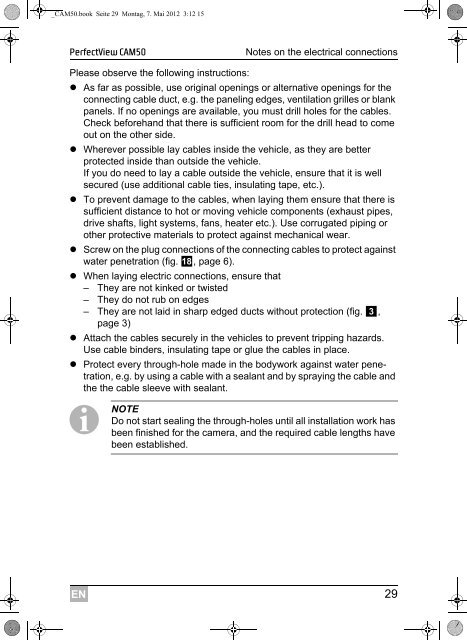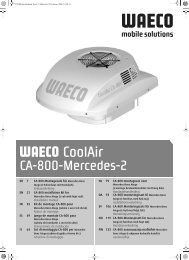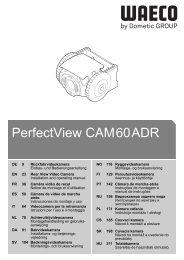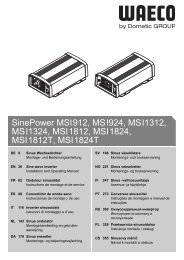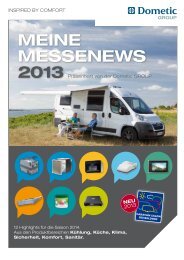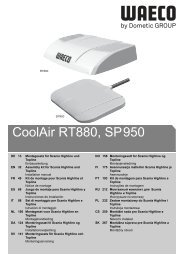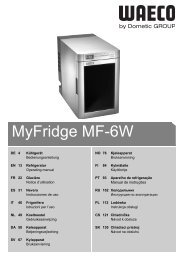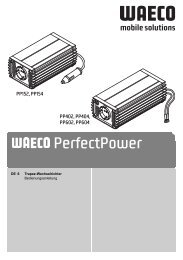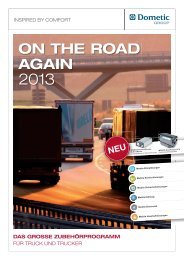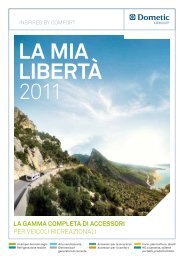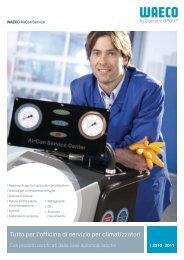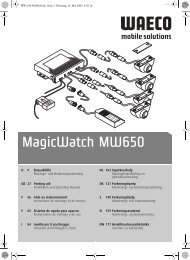PerfectView CAM50 - Waeco
PerfectView CAM50 - Waeco
PerfectView CAM50 - Waeco
You also want an ePaper? Increase the reach of your titles
YUMPU automatically turns print PDFs into web optimized ePapers that Google loves.
_<strong>CAM50</strong>.book Seite 29 Montag, 7. Mai 2012 3:12 15<br />
<strong>PerfectView</strong> <strong>CAM50</strong><br />
Notes on the electrical connections<br />
Please observe the following instructions:<br />
• As far as possible, use original openings or alternative openings for the<br />
connecting cable duct, e.g. the paneling edges, ventilation grilles or blank<br />
panels. If no openings are available, you must drill holes for the cables.<br />
Check beforehand that there is sufficient room for the drill head to come<br />
out on the other side.<br />
• Wherever possible lay cables inside the vehicle, as they are better<br />
protected inside than outside the vehicle.<br />
If you do need to lay a cable outside the vehicle, ensure that it is well<br />
secured (use additional cable ties, insulating tape, etc.).<br />
• To prevent damage to the cables, when laying them ensure that there is<br />
sufficient distance to hot or moving vehicle components (exhaust pipes,<br />
drive shafts, light systems, fans, heater etc.). Use corrugated piping or<br />
other protective materials to protect against mechanical wear.<br />
• Screw on the plug connections of the connecting cables to protect against<br />
water penetration (fig. h, page 6).<br />
• When laying electric connections, ensure that<br />
– They are not kinked or twisted<br />
– They do not rub on edges<br />
– They are not laid in sharp edged ducts without protection (fig. 3,<br />
page 3)<br />
• Attach the cables securely in the vehicles to prevent tripping hazards.<br />
Use cable binders, insulating tape or glue the cables in place.<br />
• Protect every through-hole made in the bodywork against water penetration,<br />
e.g. by using a cable with a sealant and by spraying the cable and<br />
the the cable sleeve with sealant.<br />
I<br />
NOTE<br />
Do not start sealing the through-holes until all installation work has<br />
been finished for the camera, and the required cable lengths have<br />
been established.<br />
EN<br />
29


